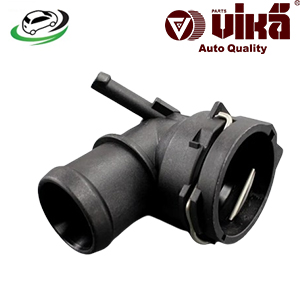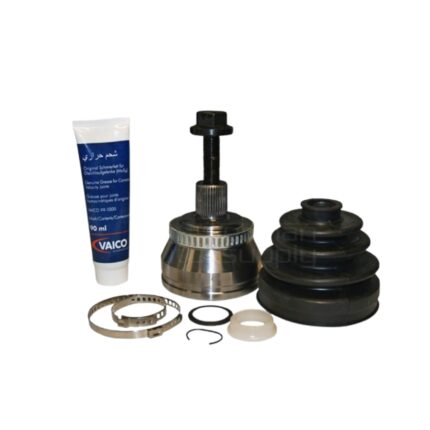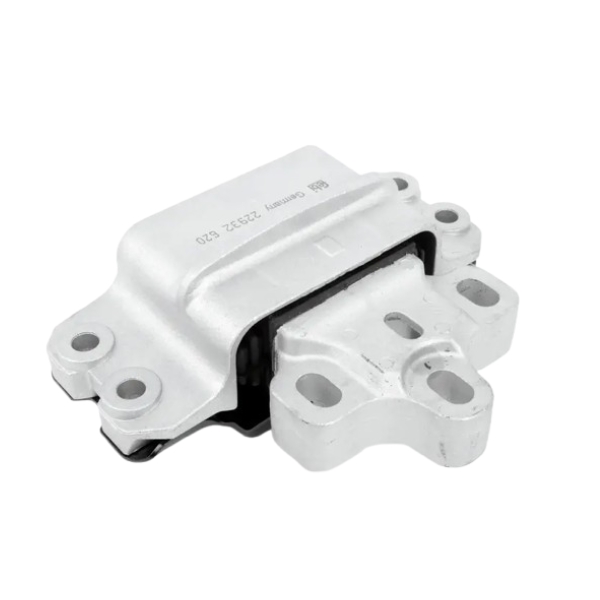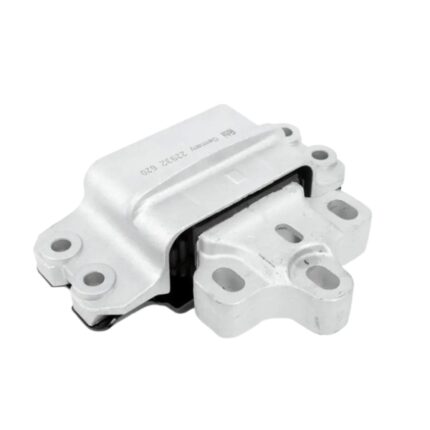Get VW Jetta V TDI Left Transmission Mount 1K0199555T in Kenya
The left transmission mount, sometimes referred to as the left side motor mount or left side transmission support, is a crucial component in a vehicle’s drivetrain system. It plays a vital role in securing the transmission to the vehicle’s chassis, minimizing vibrations, and ensuring smooth operation of the transmission. Understanding the design, function, benefits, common issues, and maintenance of the left transmission mount is essential for maintaining vehicle performance and reliability.
Function and Importance
- Transmission Support: The primary function of the left transmission mount is to securely anchor the transmission to the vehicle’s chassis. It holds the transmission in place, preventing excessive movement that could lead to misalignment and potential damage.
- Vibration Dampening: The left transmission mount helps to absorb and dampen vibrations generated by the engine and transmission. By reducing the amount of vibration transmitted to the vehicle’s chassis, it contributes to a smoother and more comfortable driving experience.
- Alignment Maintenance: Proper alignment of the transmission is critical for efficient power transfer between the engine and the wheels. The left transmission mount helps maintain this alignment, ensuring smooth and effective operation of the drivetrain.
- Noise Reduction: In addition to vibration dampening, the left transmission mount also helps reduce noise transmitted from the transmission to the vehicle’s cabin. This contributes to a quieter and more pleasant driving environment.
Design and Construction
- Materials: Left transmission mounts are typically constructed from a combination of materials designed to provide strength, durability, and vibration isolation. Common materials include:
- Rubber: Most traditional transmission mounts use rubber or a rubberized compound for its flexibility and vibration-absorbing properties.
- Polyurethane: High-performance vehicles or heavy-duty applications may use polyurethane for its increased strength and durability compared to rubber.
- Metal: The mount often includes metal components, such as brackets or plates, for structural support and attachment to the vehicle’s chassis.
- Design Features: The design of the left transmission mount includes several key features:
- Mounting Brackets: These are typically bolted to both the transmission and the vehicle’s chassis, providing a secure attachment.
- Vibration Isolators: Rubber or polyurethane inserts are used to absorb vibrations and reduce noise.
- Bushing: The mount may include a bushing that provides additional support and flexibility, accommodating engine and transmission movement while minimizing vibration.
- Shape and Fit: The left transmission mount is designed to fit specific vehicle models and transmission configurations. It must be shaped and sized correctly to ensure proper alignment and secure attachment.
Signs of a faulty Left Transmission Mount
1. Excessive Vibration
- Increased Vibration: One of the primary functions of the transmission mount is to absorb and dampen vibrations from the engine and transmission. If the mount is failing, you may experience increased vibration in the vehicle’s cabin, especially noticeable during acceleration or idling.
- Unusual Vibrations: Vibrations may become more pronounced when the engine is under load or when driving over rough surfaces.
2. Clunking or Thumping Noises
- Clunking Sounds: A faulty transmission mount can cause clunking or thumping noises when shifting gears or accelerating. These sounds result from excessive movement or misalignment of the transmission.
- Noise During Acceleration: If you hear a loud clunk or thump when accelerating or shifting, it may indicate that the mount is worn or damaged.
3. Engine or Transmission Movement
- Excessive Movement: A failing mount may allow excessive movement of the engine or transmission, which can be felt as a noticeable shift or movement during driving.
- Engine Shifting: You might observe the engine shifting or tilting more than usual, particularly when starting or stopping the vehicle.
4. Transmission Misalignment
- Difficulty Shifting Gears: Misalignment caused by a faulty mount can make gear shifts difficult or cause the transmission to feel out of sync.
- Unusual Gear Engagement: Problems with gear engagement or slipping may occur if the mount is not holding the transmission in proper alignment.
5. Abnormal Noises While Driving
- Rattling or Banging: Rattling or banging noises, especially when driving over bumps or rough roads, can indicate that the transmission mount is failing.
- Metallic Sounds: If you hear metallic sounds coming from the transmission area, it could be a sign of damage to the mount or associated components.
6. Increased Engine Noise
- Higher Engine Noise: If the mount is not properly isolating vibrations and noise, you may experience an increase in engine noise within the cabin.
- Unusual Engine Sounds: Loud or unusual engine sounds can occur if the mount is failing to dampen the engine’s vibrations effectively.
7. Check Engine Light
- Dashboard Warning Light: While not always directly related to the transmission mount, a malfunctioning mount can cause other drivetrain components to operate improperly, potentially triggering the check engine light.
- Diagnostic Trouble Codes: If the check engine light is on, a diagnostic scan may reveal trouble codes related to drivetrain or transmission issues.
8. Unusual Vehicle Handling
- Handling Issues: Faulty mounts can affect the vehicle’s handling, causing it to feel unstable or unsteady, particularly during acceleration or deceleration.
- Steering Problems: Changes in vehicle handling or steering feel can sometimes be attributed to issues with the transmission mount.
9. Visual Inspection Findings
- Cracked or Split Mount: Visually inspect the mount for any visible signs of cracking, splitting, or degradation of the rubber or polyurethane material.
- Damaged Mounting Bolts: Check for loose or damaged mounting bolts, which can indicate a problem with the mount’s integrity.
10. Increased Engine and Transmission Wear
- Premature Wear: A failing transmission mount can lead to increased wear on other drivetrain components due to improper alignment and additional stress.
- Component Damage: Over time, the extra strain on the engine and transmission can lead to damage to other parts, such as the transmission itself or related mounts.
Maintenance and Inspection
- Regular Inspections: Periodic inspections of the left transmission mount are essential for identifying potential issues early. Look for visible signs of wear, cracks, or damage to the mount or its components. Check for any unusual noises or vibrations while driving, which may indicate a problem.
- Visual and Physical Checks: Inspect the mount for any signs of cracking, splitting, or deterioration of the rubber or polyurethane material. Ensure that the mounting bolts are secure and not loose or damaged.
- Vibration and Noise Checks: Pay attention to any increased vibration or noise coming from the transmission area. If you notice unusual vibrations or noises, it may be an indication of a failing left transmission mount.
- Professional Inspection: If you suspect a problem with the left transmission mount or if you experience noticeable changes in vehicle performance, seek professional assistance. A mechanic can perform a thorough inspection and diagnose any issues with the mount or related components.
Replacement and Repair
- Replacement: If the left transmission mount is found to be damaged or worn beyond repair, replacement is typically the best option. Ensure that the replacement mount matches the specifications of the original part to ensure proper fit and function.
- Repair: Minor issues, such as loose bolts or minor deterioration, may sometimes be repaired. For example, tightening loose bolts or replacing worn bushings can help restore the mount’s functionality. However, replacement is often recommended for long-term reliability.
- DIY vs. Professional Help: Replacing or repairing the left transmission mount may be feasible for those with automotive experience. However, for most vehicle owners, seeking professional assistance ensures proper installation and avoids potential issues.
- Installation: When replacing the left transmission mount, ensure that the new mount is installed correctly. This includes properly aligning the mount, securing the mounting bolts to the manufacturer’s specifications, and checking for any misalignment or interference.
Follow us on Facebook for more parts.




